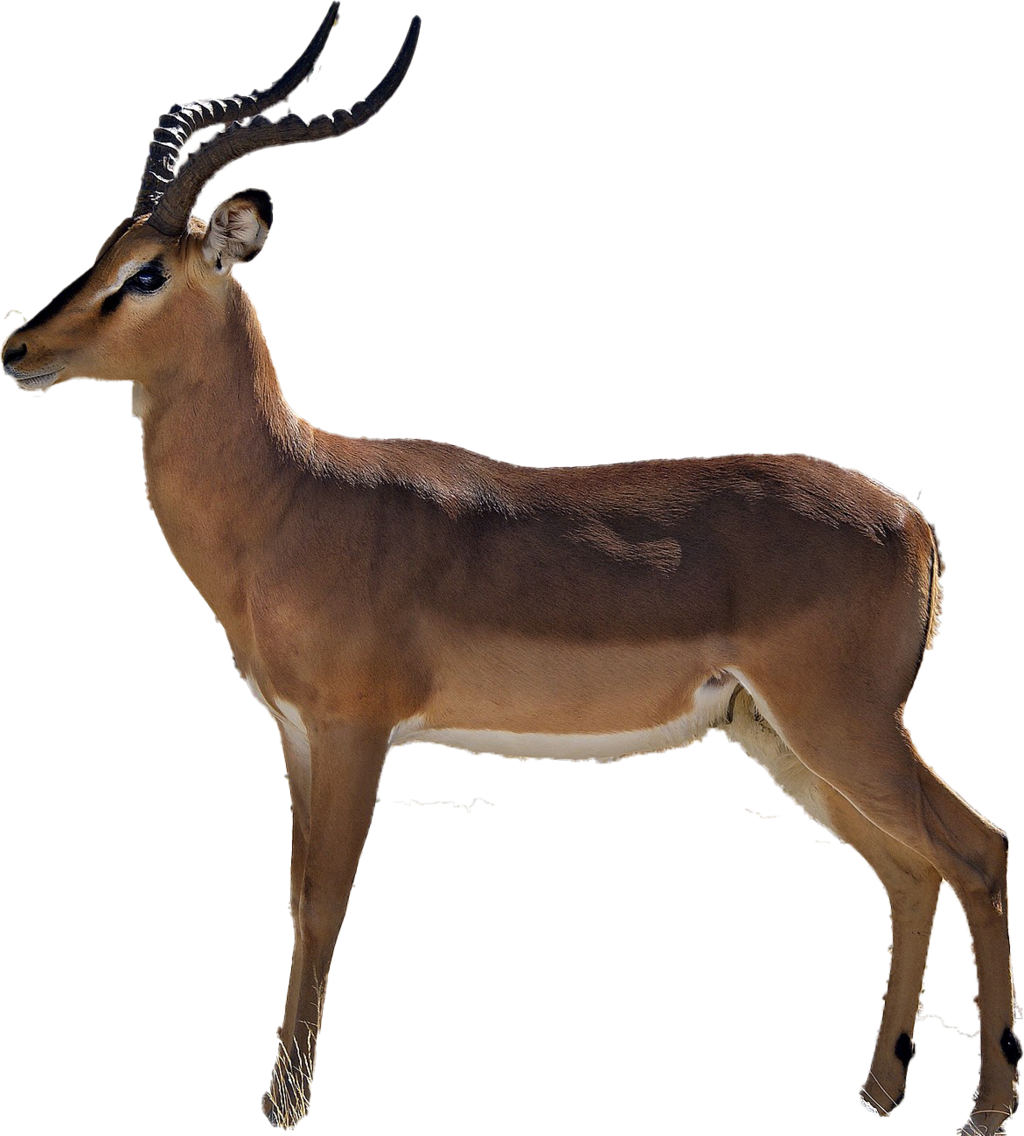
Description:
The impala reaches 70–92 cm at the shoulder and weighs 40–76 kg. It features a glossy, reddish brown coat. The male's slender, lyre-shaped horns are 45–92 cm long.
Habitat:
Two subspecies are recognised—the grassland-dwelling common impala, and the larger and darker black-faced impala, which lives in slightly more arid, scrubland environments.
Diet:
Browsers as well as grazers, impala feed on monocots, dicots, forbs, fruits and acacia pods (whenever available).
Behavior:
Active mainly during the day, the impala may be gregarious or territorial depending upon the climate and geography. Three distinct social groups can be observed: the territorial males, bachelor herds and female herds. The impala is known for two characteristic leaps that constitute an anti-predator strategy. An annual, three-week-long rut takes place toward the end of the wet season, typically in May. Rutting males fight over dominance, and the victorious male courts females in oestrus. Gestation lasts six to seven months, following which a single calf is born and immediately concealed in cover. Calves are suckled for four to six months; young males—forced out of the all-female groups—join bachelor herds, while females may stay back.